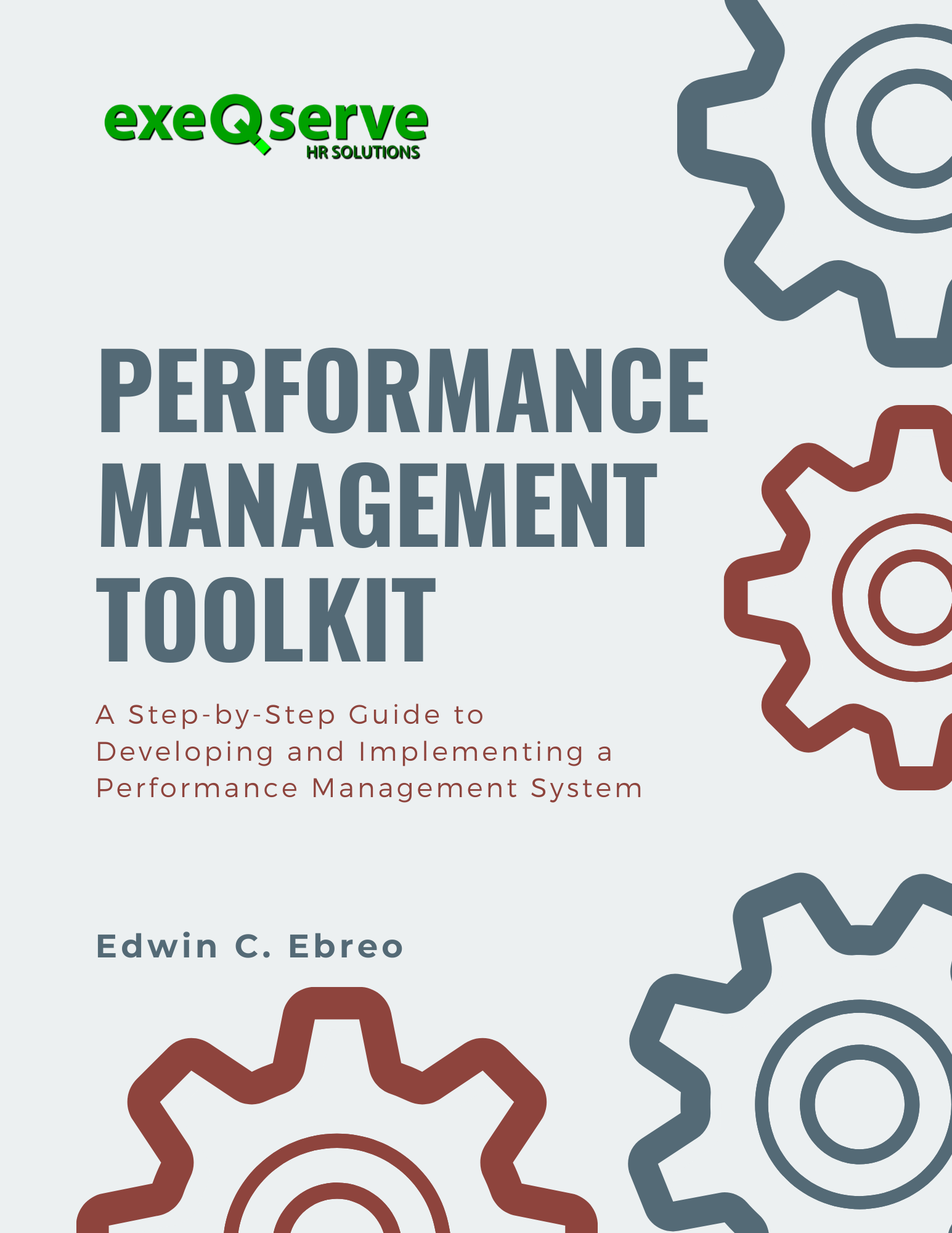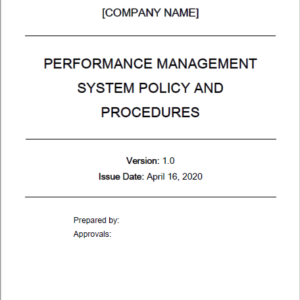Description
ExeQserve Performance Management Toolkit
E-Book
- The HR department developed the system without the participation of the stakeholders and users. This often happens. HR often fails to engage managers and employees in the process of designing the organization’s performance management system. This leads to lack of buy-in and minimum compliance by stakeholders
- Employees mistake performance appraisal for performance management. A lot of the companies I’ve encountered spend barely half a day to orient users about performance management. Many managers focus mainly on how to fill appraisal forms. Effective implementation of this system requires thorough knowledge of performance goal setting, monitoring of performance, giving timely and regular feedback, facilitating employees’ capacity to perform, appraising performance, and rewarding performance. Some key skills like, training, coaching, problem-solving, and empowering are essential to performance management. If HR fails to provide the necessary training, it is bound to fail.
- Companies lack clearly written policies and procedures. Very few companies have anything comprehensive written on how to operate a performance management system. When I ask managers if they have any policy, they show me the forms and the instructions written on how to fill them. How management decides on performance is a mystery to employees. This causes a lot of mistrust in the system, and worse, mistrust in the managers that run the system.
- HR uses generic performance appraisal tools. Some companies have addressed this issue but there are still many out there where managers who review performance write N/A in some areas of the performance appraisal because they don’t apply to employees. Many employees are also not clear about how their performances are being appraised and how behavioral aspects of their appraisals are applied in the workplace.
- There is a total lack of holistic performance management system. All of the above issues lead to a very limited system that lacks cohesive elements. Goals are not clear and there is no clear monitoring and feedback system. Furthermore, performance issues are discussed during the annual appraisal instead of sooner, when employees could have used the feedback to learn faster. In many cases, appraisals are used to review employee compensation or determine bonuses. Without clear performance indicators, this exercise becomes very political; leading to undeserved rewards or the perception of favoritism and lack of fairness.
The ultimate success indicator of a performance management system is a trend of aligned and continually improving performance. For this to work, HR and Line Managers need to work together in formulating a solution that works for the organization, and enables the following:
- Sets clear performance goals and behavioral expectations
- Equips managers and staff with tools for monitoring and improving performance
- Allows Managers and team members to develop a coaching relationship
- Recognizes and rewards nothing less than good performance
- Motivates employees to perform better
Managing employee performance is an important managerial responsibility. I wrote this book to help those who are frustrated with their performance management system and wish to make improvement but don’t know where to start. I gathered all my experiences working with various organizations formulating and implementing performance management systems and share everything that I can including electronic copies of tools and templates so that you don’t have to start from scratch. I’d like to think that the my most important legacy would be to provide the necessary tools to enable manager and employee partnership towards shared performance success.
Everything You Need to Manage Employee Performance
- Performance Management Program Policy and Procedures template.
- Performance Goal Matrix template that maps out the KRA, KPI, performance targets, ways to measure, frequency of measure, and weights assigned to each target.
- Generic Competency Dictionary to get you started in implementing a competency-based performance management system if you wish to take that route.
- Performance Scorecard that combines measurement of results and competencies/behavioral attributes necessary for high performance.
- Performance Monitoring tools that will help you keep track of key performance metrics. This provides for timely and regular performance feedback, and solid basis for performance appraisal
Unless otherwise marked for external use, the items in this PMS Toolkit are for internal noncommercial use by the licensed ExeQserve client. The materials contained in this Toolkit may not be repackaged or resold. ExeQserve makes no representations or warranties as to the suitability of this Toolkit for any particular purpose and disclaims all liabilities for any damages, whether direct, consequential, incidental or special, arising out of the use of or inability to use this material or the information provided herein.





Reviews
There are no reviews yet.